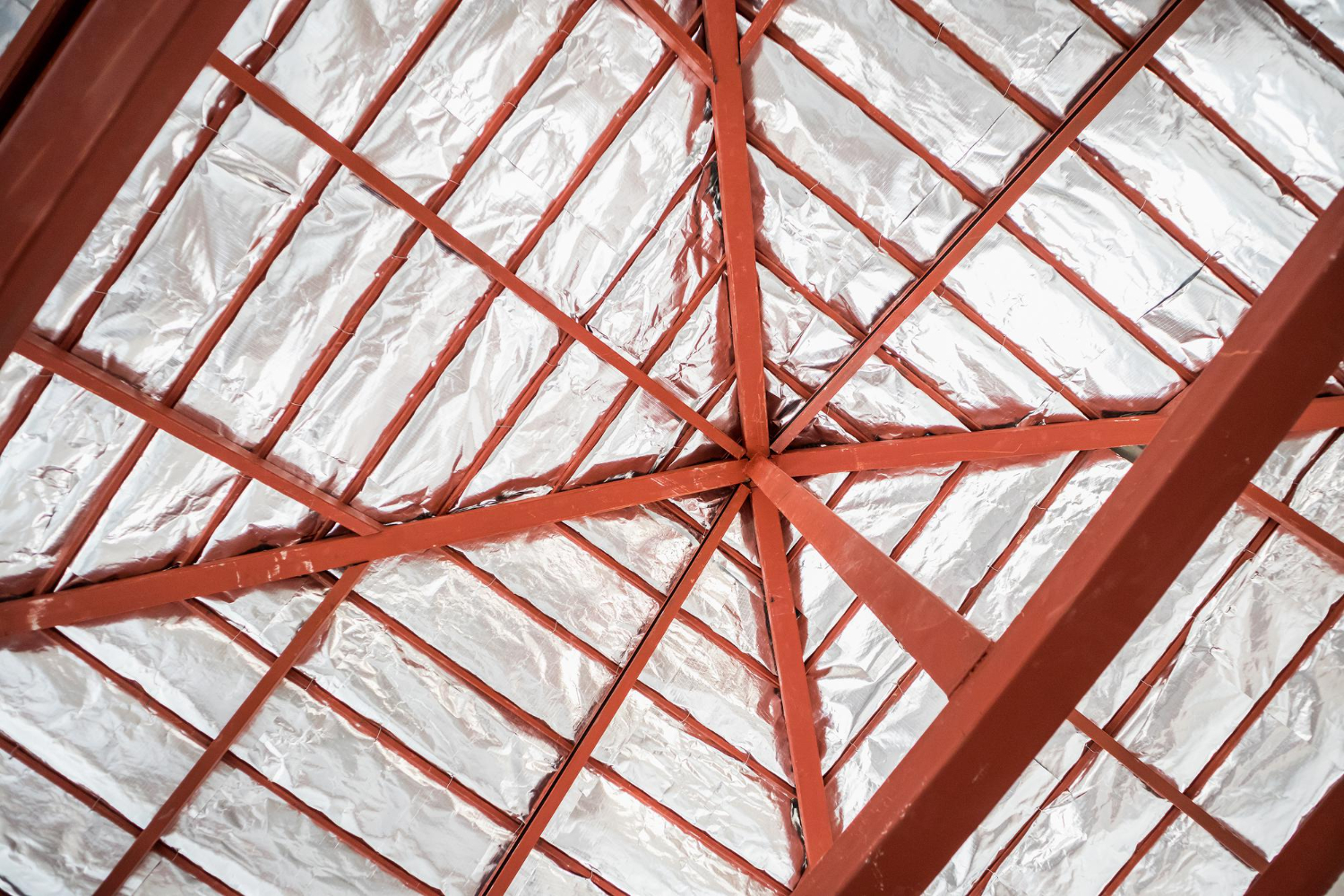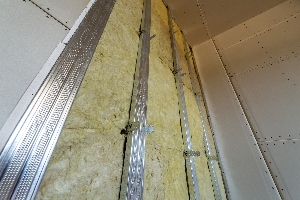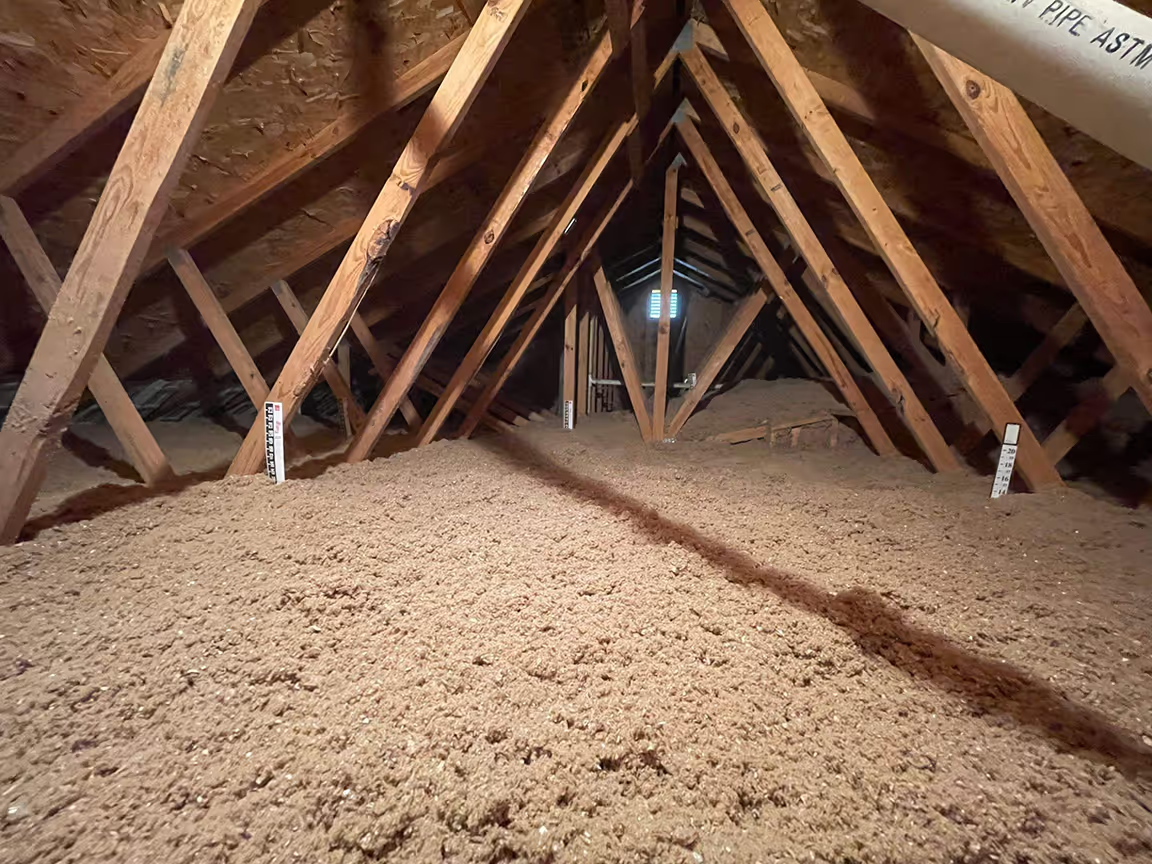The right insulation for metal buildings depends on your budget, climate, and building use, with options ranging from affordable fiberglass blankets to high-performance spray foam. Each type has different benefits and costs that affect long-term savings.
Metal buildings offer great value, but they need proper insulation to control temperature and reduce energy costs. Without insulation, these structures can become too hot in summer and too cold in winter, making them uncomfortable and expensive to heat or cool.
The decision involves comparing materials, R-values, and installation requirements to find the best solution for each specific project and budget.
In this article, you’ll learn how to choose the best insulation for metal buildings based on R-values, cost, and material type.
Here’s what you need to know.
- Why insulation for metal buildings pays off
- Comparing options for metal roofing insulation
- Costs, R-values, and what affects your price
- Installation details that make the difference
- Choosing a partner and planning the job
Keep reading! Understanding insulation options, costs, and installation methods helps building owners make smart choices.
Why insulation for metal buildings pays off
Metal building insulation delivers real financial benefits through reduced energy costs and prevents costly moisture damage. The investment creates comfortable spaces that stay usable throughout the year.
Lower bills, quieter interiors, and steadier temperatures
Metal conducts heat rapidly, making uninsulated buildings expensive to heat and cool. Insulation creates a barrier that reduces energy transfer through walls and roofing materials.
Buildings without insulation can become ovens in summer and freezers in winter. This forces HVAC systems to work harder and consume more energy.
Key energy savings include:
- 30-50% reduction in heating costs
- 25-40% lower cooling expenses
- More consistent indoor temperatures
Insulation also reduces noise from rain, hail, and outside activities. The material absorbs sound waves that would otherwise bounce off metal surfaces.
Temperature swings decrease significantly with proper insulation. Indoor spaces maintain steadier conditions instead of following outdoor weather patterns.
How insulation stops condensation on steel panels
Condensation forms when warm, humid air contacts cold metal surfaces. This moisture buildup leads to rust, mildew, and mold problems.
Metal buildings without insulation experience severe condensation issues. Water droplets collect on walls and roofs, creating ongoing maintenance problems.
Condensation damage includes:
- Rust formation on steel panels
- Mold growth in corners and joints
- Equipment corrosion
- Stored items getting damaged
Insulation prevents condensation by keeping interior metal surfaces warmer. The barrier reduces temperature differences that cause moisture to form.
Proper insulation systems include vapor barriers that block humid air from reaching cold surfaces. This dual protection eliminates most condensation problems.
Comfort upgrades that make shops and barns usable year-round
Uninsulated metal buildings become unusable during extreme weather. Workers and animals cannot function in spaces that reach dangerous temperatures.
Insulation transforms metal structures into comfortable work environments. Shops, barns, and storage areas become functional throughout all seasons.
Year-round benefits include:
- Safe working temperatures for employees
- Better livestock comfort in barns
- Protection for stored equipment and materials
- Increased building usage hours
Workshops require steady temperatures for many tasks. Paint application, woodworking, and mechanical repairs need controlled environments.
Agricultural buildings protect animals and feed from temperature extremes. Insulated barns reduce stress on livestock and prevent feed spoilage.
Storage areas maintain better conditions for equipment, tools, and inventory. Temperature control prevents damage from condensation and extreme heat.
Comparing options for metal roofing insulation
Metal building owners have three main insulation paths to consider. Spray foam delivers top performance but costs more, while fiberglass and foam boards offer solid protection on tight budgets, and radiant barriers work best in hot climates with specific roof designs.
Spray foam insulation for metal buildings and when it's the smart pick
Spray foam creates an airtight seal that stops air leaks and moisture problems. This type of insulation expands to fill gaps around metal roof panels and structural elements.
Closed-cell spray foam provides the best results for metal roofing insulation. It offers R-6 to R-7 per inch and blocks water vapor completely.
Open-cell foam costs less but only gives R-3.5 per inch. It also lets moisture pass through, which can cause problems in metal buildings.
Spray foam works best when:
- The building needs high energy efficiency
- Condensation has been a problem
- The roof has many penetrations or complex shapes
The main downsides are cost and installation requirements. Professional application is required, and the material costs 2-3 times more than fiberglass options.
Fiberglass and foam board for budget-friendly coverage
Fiberglass batts and rigid foam boards give good insulation performance at lower costs. These materials work well for most metal building applications.
Fiberglass options include:
- Single-layer batts (R-10 to R-19)
- High-R fiberglass systems (R-25 to R-30)
- Faced batts with vapor barriers
Rigid foam boards offer consistent R-values and resist moisture better than fiberglass. Polyisocyanurate boards provide R-6 per inch, while expanded polystyrene gives R-4 per inch.
Installation is simpler than spray foam. Most builders can handle the work without special equipment or training.
The key challenge is preventing thermal bridging through metal framing. Using continuous insulation or double-layer systems helps solve this problem.
Radiant barriers and where they actually help
Radiant barriers reflect heat instead of absorbing it. They work by blocking radiant heat transfer from hot metal roofing to the building interior.
These barriers perform best in hot, sunny climates where cooling costs are high. They provide little benefit in cold regions where heating is the main concern.
Effective applications include:
- Low-slope metal roofs with air gaps
- Buildings with high ceilings
- Warehouses and agricultural structures
Foil-faced insulation combines radiant barrier properties with traditional insulation. This dual approach works better than radiant barriers alone in most cases.
The material costs less than other insulation types. However, proper installation requires an air space between the barrier and roof surface to function correctly.
Costs, R-values, and what affects your price
Metal building insulation costs depend on several key factors including building size, material choice, and installation complexity. R-values determine how well insulation performs, while material and labor costs can vary significantly based on your specific project needs.
What drives the cost to insulate a 30×50 metal building
A 30×50 metal building covers 1,500 square feet of floor space. The total insulation cost depends on wall height and roof design.
Typical cost ranges for different insulation types:
- Fiberglass batts: $800-$1,500
- Rigid foam boards: $1,200-$2,200
- Spray foam: $2,500-$4,500
- Reflective insulation: $600-$1,200
Buildings with higher walls need more material. A 12-foot wall height requires 33% more insulation than a 9-foot wall.
Steel roof insulation adds complexity because of the sloped surface. Metal roofs with steeper pitches cost more to insulate due to difficult access.
The building's intended use affects insulation needs. Workshops need less insulation than heated garages or storage buildings.
Recommended R-values for walls and steel roof insulation
R-values measure how well insulation resists heat flow. Higher R-values provide better energy savings but cost more upfront.
Climate zone recommendations:
- Cold climates: R-19 to R-25 for walls, R-30 to R-49 for roofs
- Moderate climates: R-13 to R-19 for walls, R-25 to R-38 for roofs
- Hot climates: R-11 to R-15 for walls, R-19 to R-30 for roofs
According to the Metal Building Manufacturers Association’s Energy Guide, prescriptive R‑value minimums for metal building roofs in semi‑heated spaces range from R‑16 in Moderate climates to R‑25 (plus liner system) in colder zones. For walls, minimum R‑values vary from R‑9.8 continuous insulation up to R‑25 ci depending on climate zone.
Steel roof insulation needs higher R-values than walls. Metal conducts heat easily, so roofs lose more energy without proper insulation.
Buildings used year-round need higher R-values. Seasonal storage buildings can use lower R-values to save money.
Local building codes set minimum R-value requirements. Check with your local building department before choosing insulation.
Material, labor, and access: how each changes the quote
Material costs make up 60-70% of total insulation expenses. Premium materials like spray foam cost more but offer better performance.
Labor factors that increase costs:
- High ceilings require scaffolding
- Complex roof shapes take more time
- Tight spaces slow down installation
- Electrical or plumbing obstacles
Access issues can double labor costs. Buildings without overhead doors make material delivery harder. Completed buildings cost more to insulate than new construction.
DIY installation saves labor costs but requires proper tools and safety equipment. Professional installation includes warranties and ensures proper vapor barrier placement.
Bulk material purchases reduce per-square-foot costs. Contractors often get better prices than individual buyers.
Weather delays can increase labor costs during winter installations.
Installation details that make the difference
Proper installation techniques separate successful insulation projects from costly failures. The most critical factors involve managing air movement, moisture control, and eliminating thermal bridges that reduce performance.
Air gaps, vapor control, and avoiding trapped moisture
Air gaps between insulation and metal surfaces create thermal breaks that improve performance. These spaces allow air circulation that prevents condensation buildup.
Proper air gap spacing:
- Maintain 1-2 inches between insulation and roof panels
- Keep consistent spacing along entire surface
- Use furring strips to create uniform gaps
Vapor barriers must face the interior space in most climates. This prevents warm, moist air from reaching cold metal surfaces where condensation forms.
Vapor barrier installation tips:
- Overlap seams by 6 inches minimum
- Seal all joints with appropriate tape
- Avoid punctures during installation
Trapped moisture leads to mold, rot, and reduced insulation performance. Install vents at ridge and eave locations to promote air movement. Check for proper drainage around the building foundation.
Retrofitting insulation under an existing metal roof
Existing metal roofs require special installation methods to achieve proper insulation performance. Access limitations and structural considerations affect material choice and technique.
Installation from interior approach:
- Measure rafter spacing accurately before ordering materials
- Use faced batts with vapor barrier toward interior
- Secure with wire supports or friction fit between framing
Safety becomes critical when working overhead. Use proper scaffolding and wear protective equipment. Fiberglass particles can cause skin and respiratory irritation.
Structural attachment methods:
- Attach support wires to structural members only
- Avoid overloading roof framing with heavy materials
- Consider spray foam for irregular spaces
Check local building codes before starting work. Some areas require permits for insulation retrofits.
Sealing, taping, and thermal breaks that prevent cold spots
Thermal bridges occur where metal framing connects interior and exterior surfaces. These connections transfer heat and create cold spots that reduce comfort and efficiency.
Common thermal bridge locations:
- Roof purlins and wall girts
- Door and window frames
- Foundation connections
- Penetrations for utilities
Thermal break materials interrupt heat transfer through structural connections. Install continuous insulation over framing members when possible.
Sealing techniques for maximum performance:
Location
Sealing Method
Materials Needed
Vapor barrier seams
Overlap and tape
Vapor barrier tape
Penetrations
Foam gaskets
Closed-cell foam
Frame connections
Thermal break strips
Foam or rubber strips
Use compatible tapes designed for specific materials. Standard duct tape fails in temperature extremes common in metal buildings.
Critical sealing points:
- All vapor barrier joints
- Around electrical outlets and fixtures
- HVAC ductwork penetrations
- Pipe and conduit entry points
Apply sealants in temperatures above 40°F for proper adhesion. Cold weather installation requires special low-temperature products.
Choosing a partner and planning the job
Finding the right insulation contractor requires careful evaluation of their experience and approach. Getting clear agreements on timelines and warranties protects your investment and ensures quality results.
What to ask metal building insulation companies before you book
Experience with metal buildings should be your first question. Not all insulation contractors understand the unique challenges of metal structures. Ask how many metal building projects they complete each year.
Request references from recent metal building jobs. Contact these customers to learn about work quality and professionalism. Check if the contractor holds proper licenses and insurance coverage.
Key questions to ask:
- What insulation types do you recommend for my building?
- Do you handle moisture barrier installation?
- How do you address thermal bridging issues?
- What safety protocols do you follow?
Ask about their crew size and training. Experienced teams work faster and make fewer mistakes. Find out if they use specialized equipment for metal building insulation.
Get details about material sourcing. Quality contractors work with trusted suppliers and can explain product specifications. They should offer multiple insulation options based on your budget and needs.
Timelines, cleanup, and warranties to get in writing
Written contracts protect both parties and set clear expectations. Demand specific start and completion dates rather than vague timeframes. Weather delays happen, but contractors should communicate changes promptly.
Cleanup responsibilities must be clearly defined. Professional contractors remove all debris and leave your property clean. Some charge extra for disposal, so clarify these costs upfront.
Essential contract elements:
- Exact materials and R-values
- Labor costs and payment schedule
- Cleanup and disposal terms
- Weather delay procedures
Warranty terms vary significantly between contractors. Material warranties typically last 10-25 years. Labor warranties usually cover 1-5 years of workmanship issues.
Read warranty exclusions carefully. Some void coverage for building modifications or extreme weather damage. Understand the claim process and response timeframes.
Want a clear plan and price? Terrain Insulation can assess and quote fast
Professional assessment starts with building measurements and energy efficiency goals. Experienced contractors evaluate your climate zone and building usage patterns. This information determines the best insulation strategy.
Detailed quotes break down material and labor costs separately. Quality contractors explain their recommendations and answer technical questions. They provide multiple options to fit different budgets.
Fast turnaround on quotes shows organizational efficiency. Contractors who respond quickly often complete projects on schedule. They should provide written estimates within 48-72 hours of site visits.
Site assessments identify potential challenges before work begins. This includes checking for existing moisture problems or structural issues. Early problem identification prevents costly delays during installation.
Conclusion
Metal building insulation is essential for comfort, energy savings, and long-term performance. The right choice depends on climate, budget, and building use.
Fiberglass blankets work well for most metal buildings. They cost less and install easily. Spray foam provides the best air sealing but costs more upfront.
Insulated metal panels offer excellent performance for new construction. They combine structure and insulation in one product.
problems in most climates. This protects the building and keeps indoor air healthy.
Professional installation ensures proper performance. Poor installation reduces effectiveness and wastes money.
The investment in quality insulation pays back through lower energy bills. Properly insulated metal buildings stay comfortable year-round.
Each insulation type has benefits and drawbacks. Research options carefully before making a decision. Consider getting quotes from multiple contractors.
Metal buildings without insulation face temperature swings and condensation issues. These problems make the space uncomfortable and inefficient.
The best insulation choice balances performance, cost, and installation requirements for each specific project.
Request a detailed quote today to find the right insulation system for your metal building's size, climate, and usage needs.






